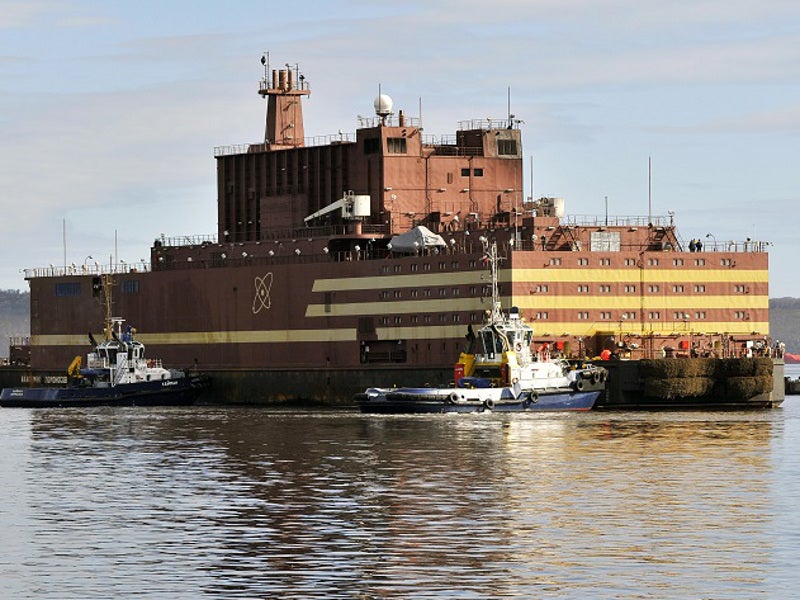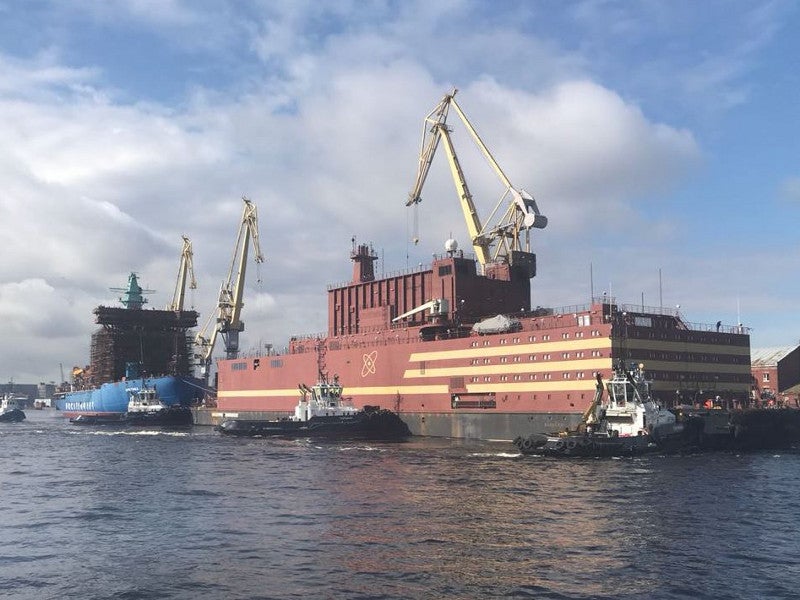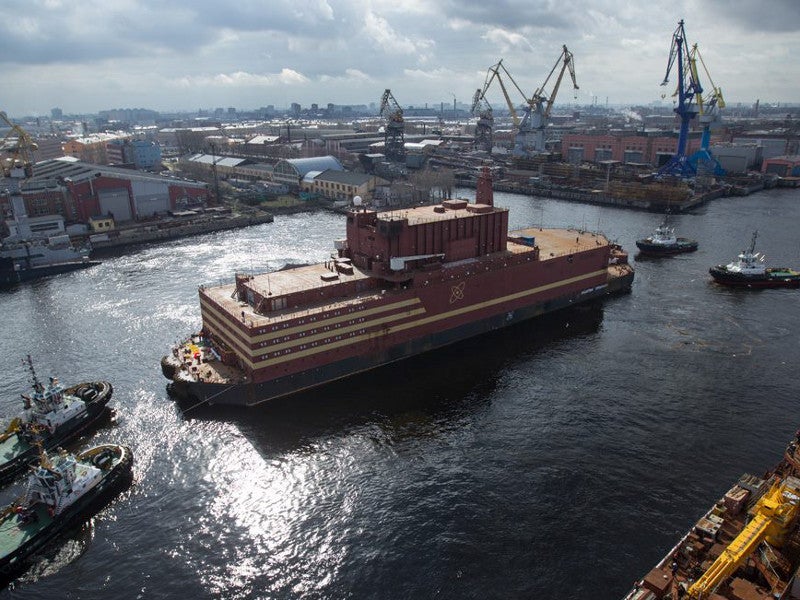Akademik Lomonosov, the world’s first floating nuclear power plant (FNPP), is located at the Russian port of Pevek, Chukotka. Rosatom developed the FNPP through its electric power division Rosenergoatom.
Named after Mikhail Lomonosov, an 18th-century Russian scientist, the 70MW floating power unit (FPU) is equipped with two small modular reactors (SMR). It has been developed as a pilot project for a future fleet of floating nuclear power plants to serve remote and isolated areas as well as offshore oil and gas fields.
The Akademik Lomonosov FPU was connected to the isolated Chaun-Bilibino electricity network in Pevek, in the Chukotka Autonomous Region of Russia’s Far East, in December 2019. It had delivered 10 gigawatt-hours (GWh) of electricity into the grid as of January 2020.
The FNPP is expected to start commercial operations by the end of 2020.
Designed for an operational life of 40 years, with an extension of ten years, the Akademik Lomonosov facility is expected to generate 50Gcal/hr of heat energy.
The generated electricity will be sufficient to supply more than 100,000 Russian households.
Akademik Lomonosov floating nuclear power plant background
The keel for the floating unit of the nuclear power plant was laid in April 2007, while the hull was launched in June 2010. The construction of the FPU was initially awarded to Sevmash Shipyard in Severodvinsk, which was then assigned to Baltiysky Zavod (Baltic Shipyard).
The FNPP is expected to become the main power generation facility in Chukotka following the proposed phased decommissioning of the 36MW Bilibino NPP and the 34MW Chaunskaya Co-Gen plant.
Akademik Lomonosov floating NPP make-up
Akademik Lomonosov floating NPP utilises low-enriched uranium, containing less than 20% of Uranium-235, as the nuclear fuel for the power generation. The FPU comprises two KLT-40S pressurized-water nuclear reactor units having a capacity of 35MW each.
The FPU is a 30m-wide, 144-long flush-decked, multi-tiered, and ice-breaking barge with a displacement of 21,000t. The unit is also capable of accommodating 69 people.
The nuclear reactor units are connected to two steam turbines and four PG-28S type steam generators. The plant also includes three main electrical condensate pumps, two double-speed circulation pumps, a generator cooling system, and other supporting infrastructure.
The steam generating unit comprises the main circulation path for heat transfer from the reactor to the steam generators.
Akademik Lomonosov floating NPP construction
Construction of the Akademik Lomonosov floating nuclear power plant began in 2009 at the Baltic Shipyard in St. Petersburg. The nuclear reactors were installed in October 2013.
Akademik Lomonosov was shifted from St. Petersburg to the FSUE Atomflot (Rosatomflot) service base in Murmansk in April 2018. Fuel loading into both the reactors was completed in October 2018.
Rosenergoatom obtained a 10-year operating license for the Akademik Lomonosov FNPP in June 2019.
The FPU set sail from the Port of Murmansk towards Chukotka for approximately 4,700km across the Arctic Ocean in August 2019.
It was docked at its permanent location in Pevek, Chukotka, in September 2019.
Major support works at the Pevek seaport included the construction of coastal infrastructure, hydraulic structures, and on-shore site works.
Electricity transmission
The electricity generated by the offshore facilities of the Akademik Lomonosov floating nuclear power plant is evacuated to the coastal infrastructure situated at Pevek.
The onshore power transmission system comprises a three-phase alternating current (AC) generator, main switchgear, and standby diesel generators.
The FNPP is expected to be a steady source of energy for the city of Pevek, as well as the entire Chukotka region in the future.
KLT-40S nuclear reactor details
The KLT-40S reactor plant uses a thermal neutron spectrum, pressurized water reactor and has a thermal capacity of 150MW.
The high-pressure reactor includes the core, eight compensating actuators, and three emergency protection actuators. The reactor vessel protection is conducted by resistance temperature transducers and thermoelectric temperature transducers along with compensating and emergency protection actuators.
The reactor core, measuring 1,220mm in diameter and 1,200mm-high, features a total of 121 fuel assemblies placed in the angles of a regular triangular lattice with a pitch of 100 mm.
The reactor units of Akademik Lomonosov will be re-fuelled once in every three years of operation.
The primary circuit of the reactor uses an external gas pressurizer system, which will help in keeping the primary circuit pressure within the prescribed limits.
Contractors involved in Akademik Lomonosov NPP
The nuclear reactor units for the Akademik Lomonosov FPU are provided by Afrikantov OKB Mechanical Engineering.
Izhorskiye Zavody OMZ Group supplied the reactor vessels for the FPU, while the turbine-generator units were supplied by Kaluga Turbine Works.
TVEL, a subsidiary of Rosatom, supplied the fuel for the Akademik Lomonosov NPP.






